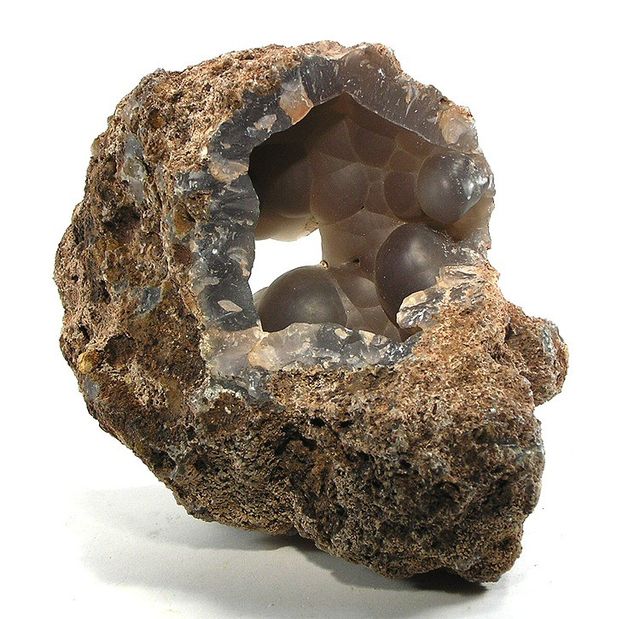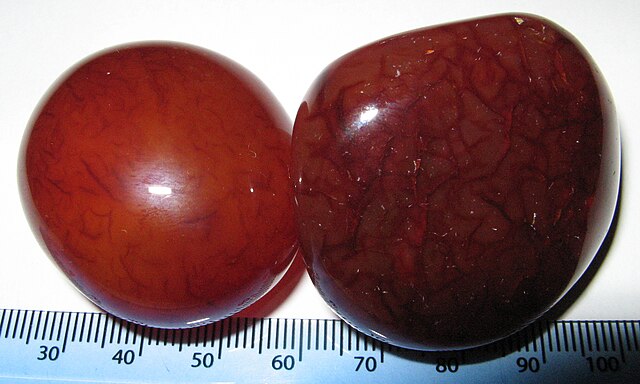Onyx is the parallel-banded variety of chalcedony, a silicate mineral. Agate and onyx are both varieties of layered chalcedony that differ only in the form of the bands; agate has curved bands while onyx has parallel bands. The colors of its bands range from black to almost every color. Specimens of onyx commonly contain bands of black and/or white. Onyx, as a descriptive term, has also been applied to parallel-banded varieties of alabaster, marble, calcite, obsidian, and opal, and misleadingly to materials with contorted banding, such as "cave onyx" and "Mexican onyx".
Onyx
Cabochons of red onyx, also called sardonyx
Black onyx with white streaks
The Gemma Augustea is a Roman cameo produced 9–12 AD and carved in a two-layered onyx gem (19 × 23 cm)
Chalcedony ( kal-SED-ə-nee, or KAL-sə-doh-nee) is a cryptocrystalline form of silica, composed of very fine intergrowths of quartz and moganite. These are both silica minerals, but they differ in that quartz has a trigonal crystal structure, while moganite is monoclinic. Chalcedony's standard chemical structure (based on the chemical structure of quartz) is SiO2 (silicon dioxide).
Chalcedony
A rare pseudomorph of a spiral Turritella-like snail shell that has been replaced by chalcedony
Agate
Carnelian








